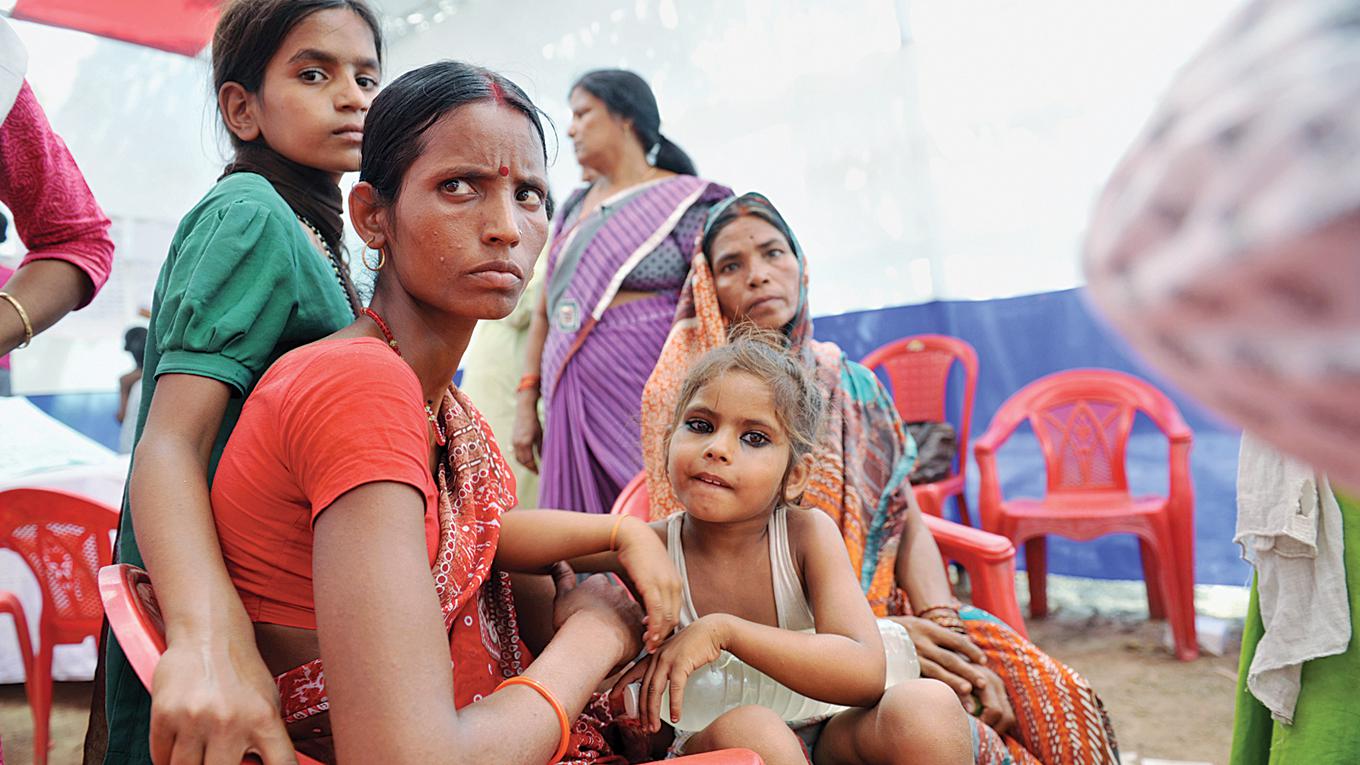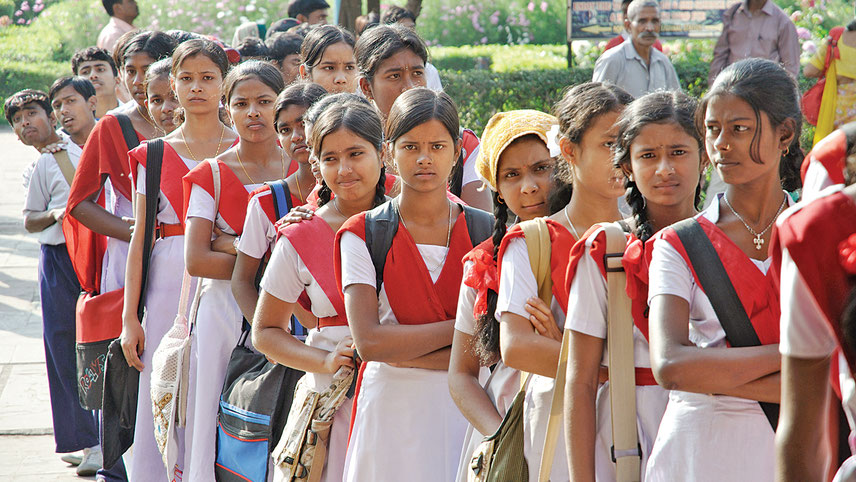-

India is no stranger to issues of discrimination against women and gender inequities

Considering the importance of gender equality and the role of women in the world today, an entire Millennium Development Goal (MDG) was dedicated to it. The fifth Sustainable Development Goal (SDG) was also dedicated to the progress of women and gender equality. The context of social inclusion, on the other hand, refers to discrimination based on different castes people belong to. Different cultures have different definitions of caste. In today’s system, caste divisions involve classification of people into various social groups based on birth, heredity, and economic status. THE INDIAN SCENARIO As per the Global Gender Gap Report (2016) published by the World Economic Forum (WEF), India ranks 87 in a list of 144 countries. There has been an improvement from 2006 when India stood at 98th position out of 115 countries. India is no stranger to issues of discrimination against women and gender inequities, and statistic after statistic bears testimony to this. As per National Crime Records (2015) a total of 3,27,394 cases of crimes against women were reported in 2015. According to the National Family Health Survey-4 (2015-16), 26.8 per cent of Indian girls are married before the age of 18 and 7.9 per cent of Indian girls have already given birth or are pregnant before they turn 19. Around 50-70 per cent of women in India face some form of domestic violence. According to 2015 World Bank data, the adult female literacy rate in India is 63 per cent whereas the adult male literacy rate is 81 per cent. The gender pay gap in India for the year 2013 was recorded at 24.81 per cent by WageIndicator. This gap increased with age. In rural India, the average salary received by regular employees was Rs428.66 per day for women compared with Rs550.23 per day for males (during 2011-12). While 62 per cent of male children receive full immunisation, among girls it is 60 per cent (ministry of statistics and programme implementation, 2012). On average, girls receive fewer immunisations than boys and higher birth order infants have lower vaccination coverage. Girls in India have 61 per cent higher mortality than boys at age 1-4 years. As per the Global Gender Gap Report (2016) published by the World Economic Forum (WEF), India ranks 87 in a list of 144 countries. There has been an improvement from 2006 when India stood at 98th position out of 115 countries. India is no stranger to issues of discrimination against women and gender inequities, and statistic after statistic bears testimony to this. As per National Crime Records (2015) a total of 3,27,394 cases of crimes against women were reported in 2015. According to the National Family Health Survey-4 (2015-16), 26.8 per cent of Indian girls are married before the age of 18 and 7.9 per cent of Indian girls have already given birth or are pregnant before they turn 19. Around 50-70 per cent of women in India face some form of domestic violence. According to 2015 World Bank data, the adult female literacy rate in India is 63 per cent whereas the adult male literacy rate is 81 per cent. The gender pay gap in India for the year 2013 was recorded at 24.81 per cent by WageIndicator. This gap increased with age. In rural India, the average salary received by regular employees was Rs428.66 per day for women compared with Rs550.23 per day for males (during 2011-12). While 62 per cent of male children receive full immunisation, among girls it is 60 per cent (ministry of statistics and programme implementation, 2012). On average, girls receive fewer immunisations than boys and higher birth order infants have lower vaccination coverage. Girls in India have 61 per cent higher mortality than boys at age 1-4 years.
-

to provide middle and high-level education to ST students in remote areas and enable access to the best opportunities in education
GOVERNMENT OF INDIA SCHEMES
Beti Bachao Beti Padhao (BBBP)
Launched in January 2015, BBBP addresses the declining Child Sex Ratio and related issues of women’s empowerment over a life-cycle continuum. A sum of H500,000 is provided to selected districts to implement the scheme. Rs.100 crore have been allotted for this scheme in 2016-17 and the outlay has been doubled to Rs.200 crore for 2017-18.
One Stop Centre (OSC)
This scheme’s purpose is to establish OSCs across various states of India to support women affected by violence. Government hospitals would be the first choice of place to establish an OSC. Women can either walk in directly or call a toll-free number for assistance. The scheme was approved for 186 locations across India in the first two phases. The aim is to set up 660 such OSCs. The budget outlay (2017-18) for this scheme is Rs.90 crore.
National Mission for Empowerment of Women (NMEW)
Implemented by the ministry of women and child development, this initiative is to holistically empower women. This is conceived as an umbrella mission with a mandate to strengthen inter-sectoral convergence and facilitate the process of coordinating all women’s welfare and socioeconomic development programmes across ministries and departments. The budget outlay (2017-18) for this scheme is Rs.70 crore.
Ujjwala
It is a comprehensive scheme for prevention of trafficking and rescue, rehabilitation and re-integration of victims. The implementing agencies are a combination of State governments, Women’s Development Centres, Urban Local Bodies, reputed trusts and non-profits. The budget outlay (2017-18) for this scheme is Rs.50 crore.
Support to Training and Employment Programme for Women (STEP)
Was being implemented by the ministry of women and child development from 1986, to provide skills that give employability to women and to provide competencies and skill that enable women (poor and marginalised) to become self-employed/entrepreneurs. The ceiling per beneficiary is Rs.18,000 for a three-month course and Rs.28,000 for six months.
Maternity Benefit Programme (MBP)
It provides cash assistance directly to pregnant and lactating mothers from the end of the first trimester of pregnancy up to six months after delivery. Here, Rs.6,000 is provided in response to fulfilling certain conditions, like having an institutional delivery, and vaccinations for the child. The budget outlay (2017-18) for this scheme is Rs.2,700 crore, a steep increase from the Rs.634 crore allotted in 2016-17.
FOR SC, ST and OBCs
Stand Up India
This scheme was launched in April 2016 to promote entrepreneurship among SCS/STS and women for loans in the range of Rs.10 lakh to Rs.1 crore. A sum of Rs.500 crore was allotted for this scheme in the 2016-17 budget. As of February 2017, over 16,000 new enterprises have come up through this scheme in activities as diverse as food processing, garments, and diagnostic centres.
Van Bandhu Kalyan Yojana (VKY)
This scheme was launched in 2014 and is implemented by the ministry of tribal affairs. The objectives of this scheme are improving the quality of life in tribal areas; improving the quality of education; qualitative and sustainable employment for tribal families; bridging infrastructure gaps with focus on quality; and protection of tribal culture and heritage. The budget outlay (2017-18) for this scheme is Rs.505 crore.
National Scheduled Caste and Scheduled Tribe (ST/SC) Hub Scheme
Launched in October 2016 and implemented by the ministry of micro, small and medium enterprises (MSMEs), this scheme was set up to provide professional support to SC/ST entrepreneurs to fulfil the obligations under the Central Government Public Procurement Policy for Micro and Small Enterprises. The total estimated budget for the sc/st Hub Scheme for the period 2016-17 to 2019-20 is Rs.490 crore.
Eklavya Model Residential Schools
The objective of this scheme is to provide middle and high-level education to ST students in remote areas and enable access to the best opportunities in education at par with the non-ST population. As of March 2017, out of these 163 districts, EMRs have been sanctioned for 112 districts.
National Overseas Scholarship Scheme for OBC candidates
This scheme was renamed the ‘Dr Ambedkar Central Sector Scheme of Interest Subsidy on Educational Loan for Overseas Studies for OBC’. As the name suggests, OBC candidates would be provided a subsidy on the interest component during the moratorium period. Half of the outlay every year is earmarked for girl students. The budget estimate for 2017-18 stands at Rs.4.3 crore.
Post-Matric Scholarships to OBC Students
This is a centrally-sponsored scheme being implemented through the state governments and union territories. The objective of the scheme is to provide financial assistance to OBC students studying at post-matriculation or post-secondary stage to enable them to complete their education. The income ceiling of parents/guardians for eligibility is H1 lakh per annum. A sum of Rs.885 crore has been budgeted for 2017-18.
Post-Matric Scholarships for SC Students
This centrally-sponsored scheme is being implemented through the State governments and Union Territories. Scholarships would be paid to students whose parents/guardians’ income from all sources does not exceed Rs.2,50,000 per annum. These scholarships would be given for the study of all recognised post-matriculation or post-secondary courses pursued in recognised institutions. A sum of Rs.3,347 crore has been budgeted for 2017-18.
Challenges of Caste-based social inclusion
There are around 1,200 castes specified as Scheduled Castes (SCs) across India. States like Tamil Nadu, Odisha and Karnataka have the highest number of SCs at 101, 93 and 76 respectively. There are around 2,400 castes notified as Other Backward Castes (OBCs) across India. States like Maharashtra, Odisha, Karnataka and Tamil Nadu have the highest number of OBCs at 255, 198, 197 and 181 respectively.
Scheduled Tribes (STS), also known as Adivasis, are the most disadvantaged and marginalised in India. Mizoram has the highest proportion of STS (94.43 per cent) and Uttar Pradesh has the lowest proportion (0.57 per cent).
Biogas
BioEnergy will showcase its innovative biogas technology in India
Mobility
Ather aims to produce 20,000 units every month, soon
Green Hydrogen
German Development Agency, GIZ is working on a roadmap for a green hydrogen cluster in Kochi
Renewable Energy
AGEL set to play a big role in India’s carbon neutrality target



















